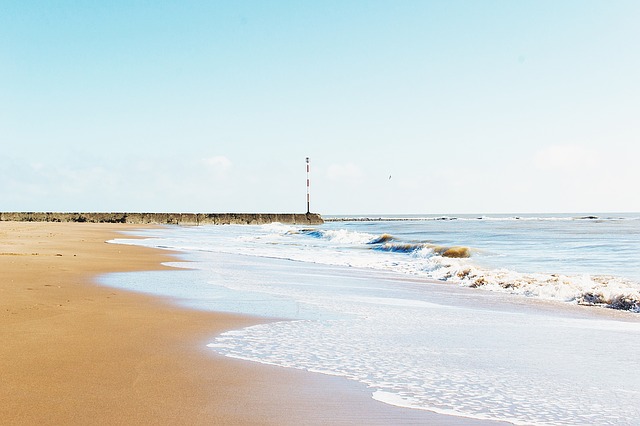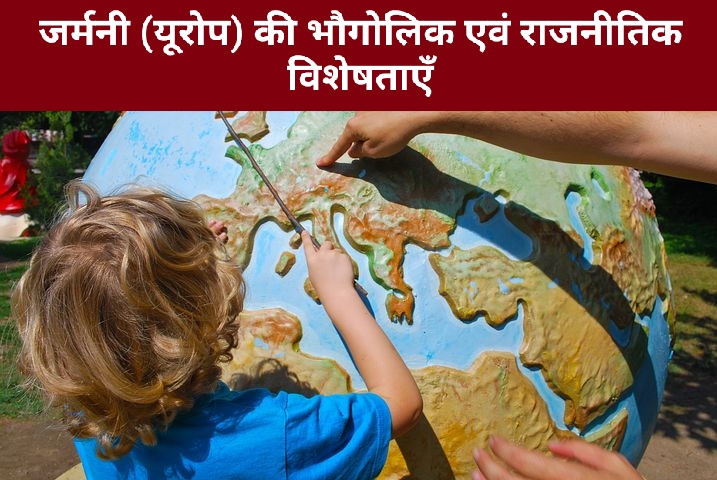
पृथ्वी पर ज्वार-भाटा || Tide on Earth
Tidal ebb is always generated on the sea surface. The reason for its origin is due to the attraction force of Sun and Moon and the effect of Gravitational Force and Centrifuge Force of Earth. Rising above sea level is called 'tide' and falling below it is called 'ebb' . Jowar reflux varies in height. The main reason for this is the variation in the depth of the seawater, the nature of the coastline and the ocean expansion. The attraction force of the Moon affects the tides on the sea surface more than the attraction force of the Sun, because it is located closest to the Earth. The attraction force of the Sun is less affected than that of the Moon, as it is located at a great distance from the Earth. When the Sun, Earth and Moon are in a straight line, then a high tide is produced in this situation. In this, the height of the tide is higher than the normal tide. Such tides occur twice in 1 month. These 2 days are of Amavasya Katha Poornima. In contrast to this situation, when the Sun, Moon and Earth are at right angles and not in a straight line, in this case the attraction of Moon and Sun works opposite to each other. In such a situation a low tide arises. In this, the height of the tide is less than the normal tide. The origin of the small tide originates only on the Saptami or Ashtami of Krishna Paksha and Shukla Paksha.
ज्वार भाटा के लाभ (Benefits of jowar reflux) -
1. ज्वारी तरंगों से जल विद्युत उत्पन्न की जा सकती है।(Hydropower can be generated by tidal waves.)
2. इसके द्वारा मोती, शंख, सीपियाँ तथा अन्य बहुमूल्य पदार्थ समुद्र तट पर आ जाते हैं। ये सभी वस्तुएँ आर्थिक दृष्टि से बहुत लाभदायक होती हैं।(By this, pearls, conch shells, shells and other valuable substances come to the beach. All these items are very economically beneficial.)
3. तटों पर उपस्थित गंदगी तथा अन्य. महत्वहीन वस्तुएँ इन तरंगों के साथ गहरे जल में चली जाती हैं। इस प्रक्रिया से समुद्री तट स्वस्थ बने रहते हैं।(Dirt and others present on the shores. Unimportant things go deep into the water with these waves. This process keeps the beaches healthy.)
4. ज्वारी तरंगों के सहारे भारी तथा बड़े जलयानों को बंदरगाह तक पहुंचने में सहायता प्राप्त होती है।(Heavy and large ships are supported to reach the port with the help of tidal waves.)
5. ज्वारीय लहरों से मछलियाँ तट पर आ जाती हैं। इनमें से कुछ उन्नत किस्म की भी होती है। फलस्वरूप मत्स्य उद्योग में वृद्धि होती है।(Fishes come to the coast due to tidal waves. Some of these are also of advanced type. As a result, the fisheries industry grows.)
ज्वारीय समय (Tidal time) - प्रत्येक स्थल पर सामान्यतः ज्वार दिन में दो बार आता है। प्रत्येक ज्वार की उत्पत्ति हर 12 घंटे के अंतराल में होनी चाहिए। परंतु वास्तव में ऐसा नहीं होता। चंद्रमा के घूर्णन तथा परिक्रमण एवं पृथ्वी की घूर्णन अवधि में अंतर के कारण प्रतिदिन ज्वार लगभग 26 मिनट की देरी से उत्पन्न होता है। हमारी पृथ्वी के घूर्णन के दौरान जब ज्वार केंद्र का एक चक्कर पूर्ण कर लेती है, तो इस स्थिति में चंद्रमा उस केंद्र से थोड़ा आगे निकल चुका होता है। इससे ज्वार केंद्र को चंद्रमा के सम्मुख पहुंचने में 52 मिनट का अतिरिक्त समय लग जाता है। अतः एक ज्वार केंद्र को पुनः चंद्रमा के सम्मुख आने में 24 घंटे 52 मिनट का समय लगता है। इसी वजह से ज्वार केंद्र के विपरीत भाग पर ज्वार की उत्पत्ति 26 मिनट की देरी से उत्पन्न होती है।
Tides usually occur twice a day at each site. The origin of each tide must be at intervals of every 12 hours. But in reality it does not happen. Due to the difference in rotation and rotation of the Moon and the rotation period of the Earth, the tides are generated daily by about 26 minutes. During the rotation of our Earth when the tide completes one round of the center, in this case the moon has moved slightly ahead of that center. This makes the tidal center take an additional time of 52 minutes to reach the moon. So it takes 24 hours 52 minutes for a tidal center to come in front of the moon again. This is why the tides originate on the opposite side of the tidal center with a delay of 26 minutes.
RF competition
INFOSRF.COM
संबंधित जानकारी नीचे देखें।
(Watch related information below) 👇🏻

आशा है, उपरोक्त जानकारी उपयोगी एवं महत्वपूर्ण होगी।
(I hope the above information will be useful and important. )
Thank you.
R. F. Tembhre
(Teacher)
infosrf.com


.jpg)


Comments